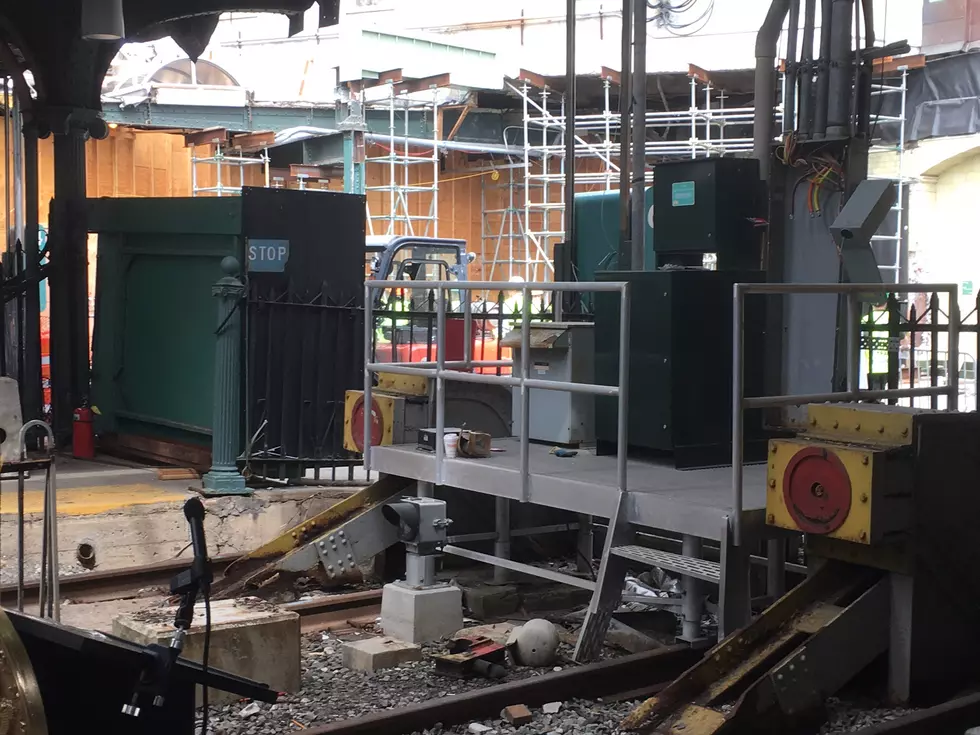
NJ commits $20M to set, enforce pollutant limits for Barnegat Bay
Barnegat Bay's fragile well-being might be strengthened, if fertilizer runoff and other pollutants are brought under control. That's the primary aim of a $20,000,000 component in Governor Chris Christie's comprehensive action plan for the bay, which he announced today in Toms River.
At Cattus Island County Park, the Governor disclosed details that include development of a total maximum daily load (TDML) standard, a figurative red line for harmful nutrients entering the Bay through its highly-developed northern section.
"From the very beginning of my administration I have made it a priority to do what no other administration ever attempted - to implement a cohesive strategy to protect an ecological treasure that is so important for area residents, visitors and the entire state," the Governor said in prepared comments. "This $20 million will fund projects to improve water quality, protect natural resources and restore ecological balance to Barnegat Bay."
Funding state officials said, is mainly a combination of natural resource damage settlements, the state corporate business tax, the revolving fund for infrastructure improvements and the federal Environmental Protection Agency (EPA)'s Clean Water Act watershed restoration program.
The commitment continues a series of moves entailed in the comprehensive action plan for the Bay that the Governor unveiled in 2010. Department of Environmental Protection (DEP) Commissioner Bob Martin considers it imperatve that the work continue.
"This funding will largely go directly to local governments and nonprofit organizations that will continue to do the work of restoring Barnegat Bay," Martin said.
Jeff Tittel, Director of the New Jersey Sierra Club, a longtime propnent of pollutant monitoring for the Bay, expressed satisfaction that TDML is now a priority, but viewed the move as better-late-than-never, and added that the real work will fall on the shoulders of New Jersey's next governor.
"As Governor, [Christie] has continuously blocked legislation to establish a TMDL and other plans to clean-up the Bay," Tittel remarked. "His previous clean-up Ten Point Plan was pointless because it did not address land use and overdevelopment, the biggest issues impacting the Bay. Christie has been the single biggest impediment to cleaning up the Barnegat Bay and hopefully now he seems to finally understand what really needs to be done,"
TDML was prominent in the breakthrough Moving Science into Action report that accompanied the 10-point plan, placing the onus on municipalities and stakeholders to incorporate the limits into stormwater discharge permits in deteriorating areas.
The study also recommended:
- Developing a watershed restoration plan for the Toms River basin as well as watershed restoration plans for key tributaries, including Tuckerton Creek, Westecunk Creek, Mill Creek, Oyster Creek, Forked River and Cedar Creek
- Continuing to implement enhancement projects for the Metedeconk Creek watershed
- Continuing to educate municipalities, marinas, homeowners' associations and waterfront property owners on controlling sea nettles by periodically power-washing or scrubbing nettle polyps from bulkheads, docks and other structures
- Working with municipalities and other stakeholders to establish a Total Maximum Daily Load (TMDL) standard for nutrients that would be incorporated into stormwater discharge permits in 18 of the watershed's 37 municipalities
- Identifying and inventorying stormwater basins and outfalls needing upgrades
- Developing and implementing a stewardship program that engages municipalities, schools, golf courses and residents in local projects that protect bay resources
- Implementing projects to restore submerged aquatic vegetation, which provides critical habitat to many aquatic species as well as spawning, nursery and feeding areas for fish
- Implementing biological monitoring prior to the decommissioning of the Oyster Creek nuclear power plant in Lacey Township, as well as monitoring after the facility closes to assess the effects of eliminating discharges of cooling water
- Continuing to conduct long-term water quality monitoring in the bay and its tributaries
- Preserving and restoring wetlands to reduce nutrient pollution and provide flood protection
- Implementing a Toms River-area specific pilot study into the effectiveness of the state's fertilizer law at reducing nutrient impacts
- Exploring the feasibility of expanding Ecologically Sensitive Areas to reduce boating impacts on sensitive ecosystems.
DEP officials point out that they've enhanced public knowledge of the 660-square-mile watershed's value and sensitivity through initiatives such as the Barnegat Bay Blitz cleanups; provided millions for stormwater infrastructure improvement grants; conducted deep research on nutrient impacts, marine life response to human impacts, sea nettle spread, and wetlands impairments; moved fertilizer laws to enactment; maintained comprehensive water quality monitoring; conducted green-boater compliance sweeps; and preserved 11,600 acres of open space in the watershed through the state Green Acres program and the Ocean County Natural Lands Trust.
They also point to the deal to decommission the Oyster Creek Nuclear Power Plant in Lacey Township in 2019, a decade ahead of schedule, as a victory. Exelon opted for the move when DEP issued a requirement for self-contained cooling towers to service the reactor, instead of drawing water straight from the Bay, as a condition of the Nuclear Regulatory Commission's approval of a 20-year license renewal.
More From Beach Radio









